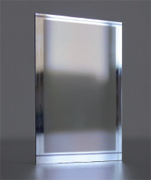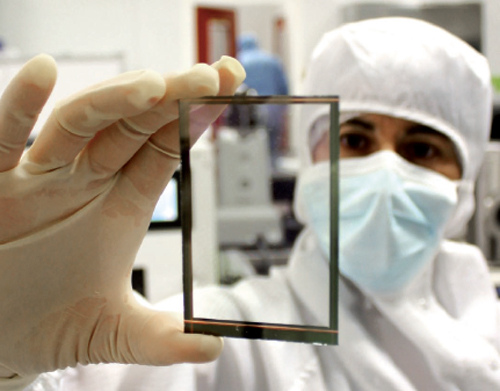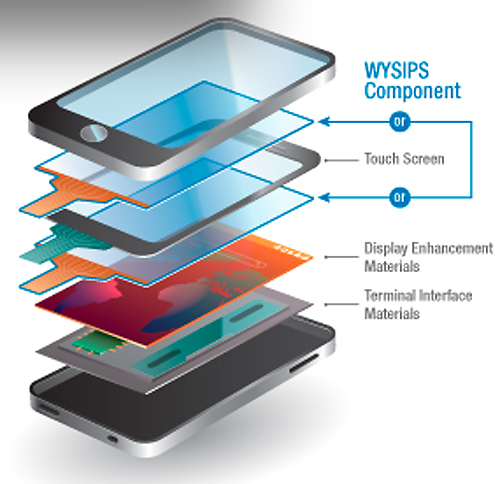Wysips technology turns smartphone displays into battery chargers
Transparent layer designed to be built into phones turns light into power to keep batteries topped up


A mobile phone in which the display acts as a battery charger? That's the thinking behind Wysips, a technology from French solar energy specialists SunPartner, which demonstrated it at Mobile World Congress in Barcelona.
Wysips – it stands for What You See Is Photovoltaic Surface – is a transparent material able to be installed beneath the glass screen of mobile devices, or built into add-on charging devices. It's 90% transparent, and 0.5mm or less thick, and uses a combination of micro-lenses and photovoltaic materials to charge the battery of the device in or with which it's used.
The semi-cylindrical lenses are designed to maximise the light capture while keeping the layer invisible to the naked eye, and the system will work on either natural or artificial light. The lens system also has the advantage of increasing the viewing angle of a screen.
Wysips can already deliver 5.8mW per square centimetre, and the company hopes to double that output by next year.

SunPartner has already invested in a plant to produce its Wysips Crystal panels in Rousset, near Aix-en-Provence, with a capacity of 8m components a year:the factory is scheduled to start up in the next few months, with a view to equipping the first smartphones with the technology before the end of this year.
And it's already looking at other applications, including watches, tablets and laptops, as well as self-powered advertising displays – its Wysips Cameleon system can be used over areas as large as two square metres.
Wysips Glass technology is usable for windows in buildings, cars, planes and the like, delivering a 30W peak output per square metre, while its also involved in a consortium developing Wysips Textile, a power-generating fabric usable for blinds, awnings and even the roofing for sports venues.
Get the What Hi-Fi? Newsletter
The latest hi-fi, home cinema and tech news, reviews, buying advice and deals, direct to your inbox.

As SunPartner's Vice President Technology and Transport, Jean-Luc Ledys (left), puts it: 'Yield and transparency : the market pushes for those performances and new functionalities.
'Tomorrow’s world begins today; given its stockpile of on-board items, it will need clothing, luggage etc. capable of generating the energy used to power all of those nomad electronics!'
Andrew has written about audio and video products for the past 20+ years, and been a consumer journalist for more than 30 years, starting his career on camera magazines. Andrew has contributed to titles including What Hi-Fi?, Gramophone, Jazzwise and Hi-Fi Critic, Hi-Fi News & Record Review and Hi-Fi Choice. I’ve also written for a number of non-specialist and overseas magazines.
